Reimagining Traditional Asanas: Modern Variations and Adaptations
December 21, 2023 2023-12-21 2:19Reimagining Traditional Asanas: Modern Variations and Adaptations

Reimagining Traditional Asanas: Modern Variations and Adaptations
Welcome to the world of yoga, where ancient traditions meet modern adaptations! Yoga has been around for thousands of years and has evolved into a diverse and dynamic practice that continues to grow in popularity. With so many variations emerging in the modern yoga landscape, it’s no surprise that traditional asanas have undergone some significant changes. In this blog post, we’ll explore the evolution of asanas over time and reimagine their classic forms with creative variations and adaptations. Whether you’re a seasoned yogi or just getting started on your journey, join us as we discover new ways to approach traditional poses with fresh perspectives. Let’s dive in!
Evolution of Asanas in The Modern Yoga Landscape
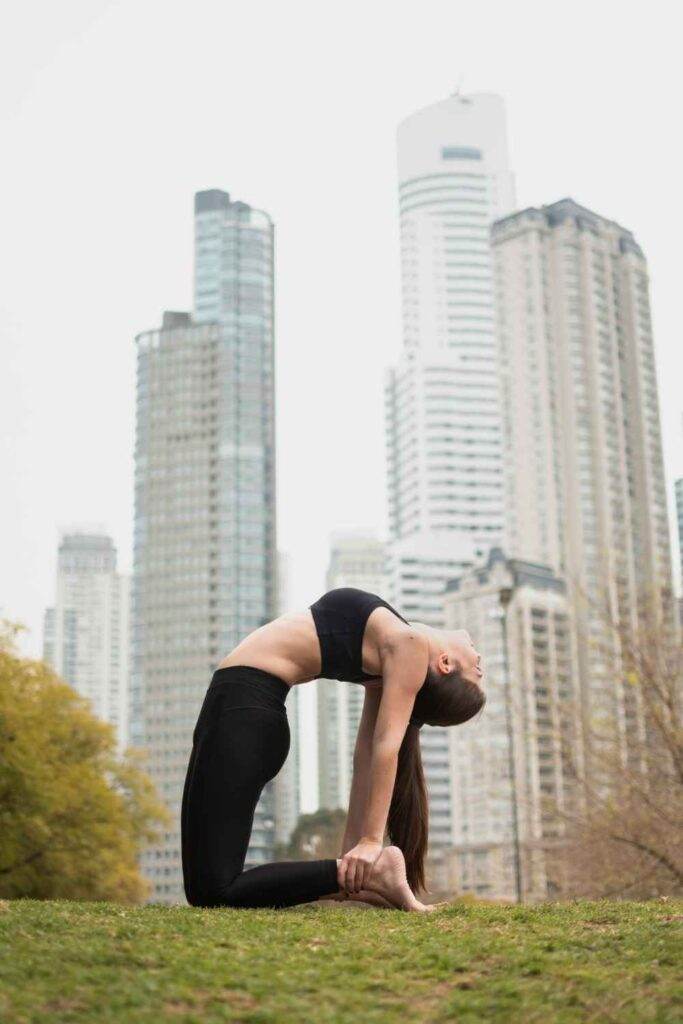 Source: Freepik
Source: Freepik
The practice of yoga has been around for centuries, and over time, the asanas (postures) have evolved with the changing landscape of modern yoga. As new styles emerged and practitioners experimented with different poses, traditional asanas were reimagined to fit a contemporary context.
In the 20th century, pioneers like B.K.S. Iyengar and Pattabhi Jois introduced new variations on classic postures that focused on alignment, breath control, and repetition. These innovations paved the way for modern interpretations of traditional asanas that emphasize strength, flexibility, and mindfulness.
Today’s yogis are constantly exploring new ways to push their bodies beyond limitations while respecting their individual abilities. Modern adaptations include power yoga variations that incorporate challenging sequences designed to increase stamina and build muscle mass.
Yin Yoga is another emerging style that emphasizes longer holds in gentler poses meant to help release tension deeply stored within connective tissues. And let’s not forget about aerial yoga- a playful adaptation of traditional standing postures done from an inverted position suspended above ground level using silk hammocks!
As we continue to evolve our understanding of what it means to practice yoga in today’s world – there will always be room for innovation when it comes down into one thing: honoring tradition while embracing change!
Reimagining Traditional Asanas: Exploring Variations and Adaptations
In the modern yoga landscape, traditional asanas have evolved to cater to different body types and abilities. Practitioners are exploring innovative variations and adaptations that help them achieve deeper benefits from their practice.
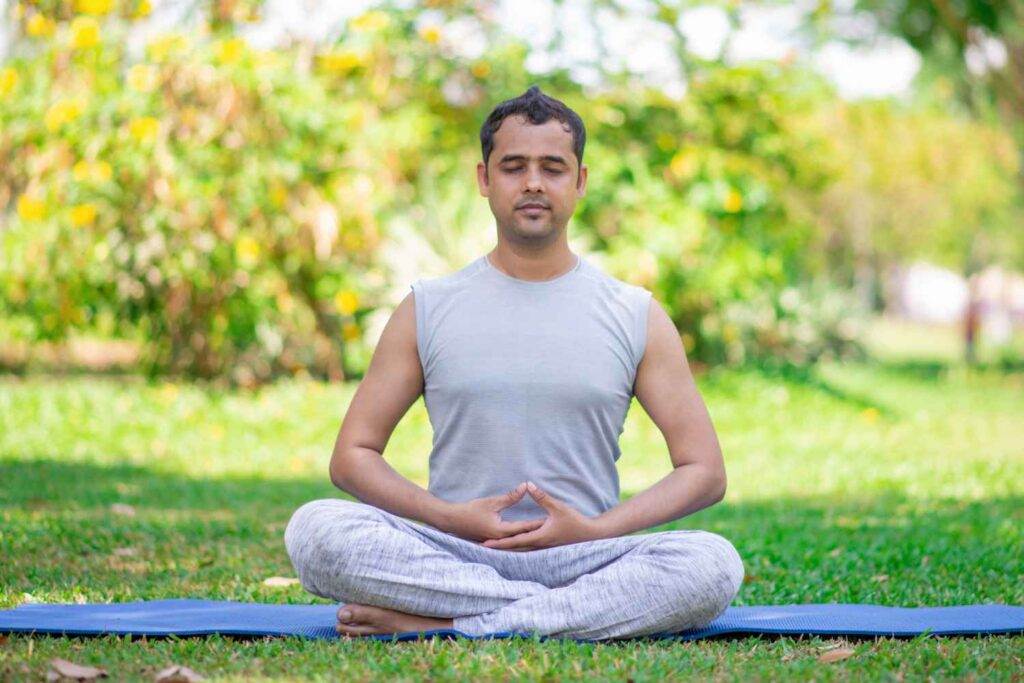 Source: Freepik
Source: Freepik
Understanding traditional asanas is crucial to reimagine them successfully. The classical forms of each pose have cultural and philosophical significance deeply rooted in ancient Indian traditions. By acknowledging this history, we can create variations that honor these roots while adapting them for contemporary needs.
Creative variations of asanas offer modifications for different body types and abilities, targeting specific muscle groups or areas of focus with new approaches. These adaptations allow yogis to engage more fully with poses in ways that address individual needs.
Asana adaptations also serve therapeutic purposes by offering support for individuals with physical limitations or health conditions. Modifications include the use of props such as blocks, blankets, and straps to provide stability or accommodate injuries.
Contemporary yoga styles like Power Yoga and Yin Yoga incorporate unique interpretations of traditional asanas through strength-based postures or longer holds respectively. Exploring innovative and unconventional asana variations opens up a world of possibilities for practitioners seeking fresh inspiration in their practice.
By exploring creative adaptations that respect the original forms’ cultural heritage while addressing contemporary needs within various contexts ranging from therapeutic applications to dynamic sequences across multiple practices including Ashtanga Vinyasa Flow we can begin a journey towards reimagining traditional asanas into something meaningful yet still relevant today!
Understanding Traditional Asanas
Asanas are the physical postures that are practiced in yoga, and traditional asanas have been passed down through generations. These postures were originally designed to prepare the body for meditation by cultivating strength, flexibility, and balance. Traditional asanas encompass a wide range of movements that can be done standing up, sitting down or lying on your back or stomach. Some examples include Mountain Pose (Tadasana), Warrior I (Virabhadrasana I), Downward-Facing Dog (Adho Mukha Svanasana), Cobra Pose (Bhujangasana) among others. Each posture has its own cultural and philosophical significance based on ancient Indian traditions. For instance, Tadasana represents stability and calmness; Virabhadrasana I symbolizes the warrior spirit within us while Bhujangasana denotes a cobra’s power to elevate itself above obstacles.
Understanding Traditional Asanas is critical when exploring modern variations and adaptations. It helps practitioners to appreciate where these poses came from culturally, philosophically and physically.
Overview of Classical Asanas and Their Original Forms
The classical asanas are the foundation of modern yoga practices. They were originally designed to prepare the body and mind for meditation and spiritual enlightenment. Each pose has a unique name, form, and set of benefits.
• One of the most commonly known asanas is the downward-facing dog pose or Adho Mukha Svanasana in Sanskrit. This pose strengthens the arms, shoulders, and legs while stretching out tight hamstrings.
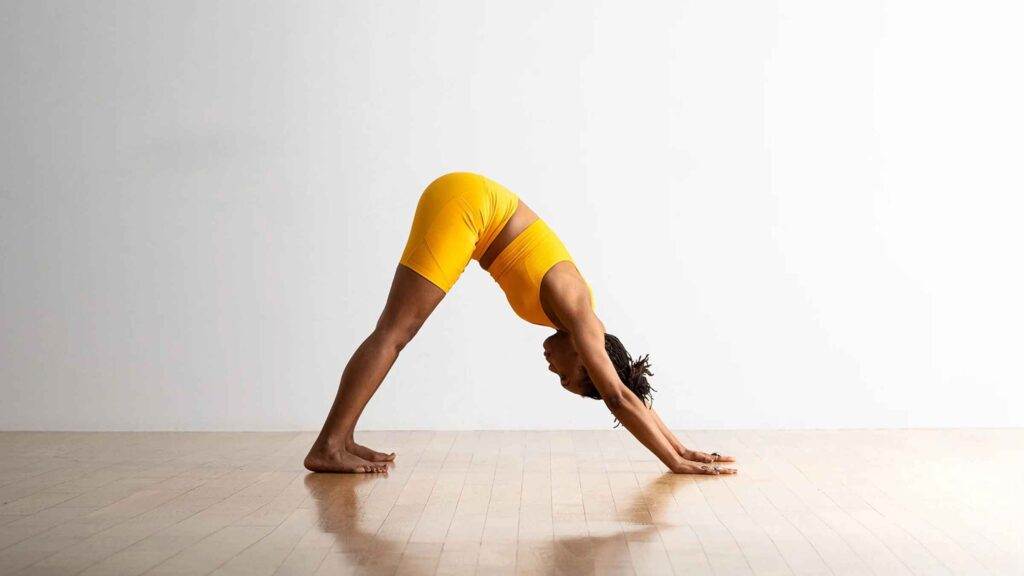
• Another popular asana is the tree pose or Vrikshasana which helps to improve balance while strengthening leg muscles. In this posture, one stands on one foot with hands clasped together at chest level.
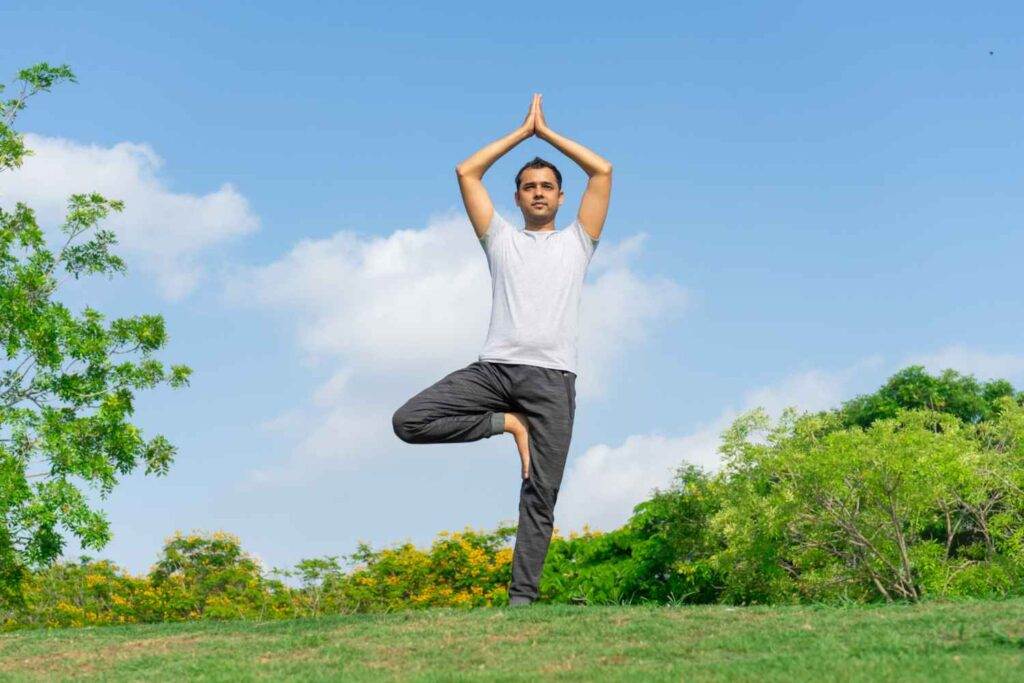
• Warrior II or Virabhadrasana II is another classic yoga posture that provides a deep stretch to hips and thighs while building strength in legs and core. It also promotes focus and concentration.
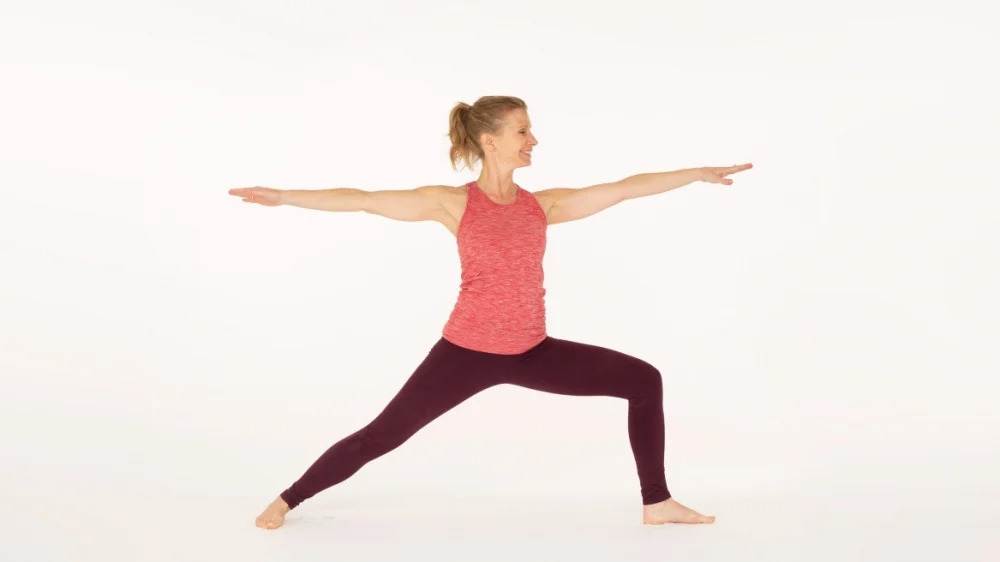
• Other traditional poses include seated forward fold (Paschimottanasana), bridge pose (Setu Bandhasana), cobra pose (Bhujangasana) among many others.
It’s important to note that each traditional asana has its own physical benefits but also carries cultural significance rooted in Hindu mythology.
Cultural and Philosophical Significance of Traditional Asanas
The practice of yoga has been deeply rooted in Indian culture for centuries. Traditional asanas, or postures, have deep cultural and philosophical significance that extend beyond the physical benefits. Many traditional asanas are named after animals or objects found in nature, such as the Cobra pose (Bhujangasana) and Tree pose (Vrikshasana). This highlights the importance of harmony between humans and their surroundings.
In addition to this, each posture is associated with a specific chakra or energy center within the body. By practicing these postures, one can balance and activate these centers to achieve overall well-being. Furthermore, many traditional asanas have spiritual significance related to Hindu mythology. The Sun Salutation sequence (Surya Namaskar), for example, pays homage to Lord Surya –the sun god– who is believed to be responsible for life on earth.
By understanding the cultural and philosophical significance behind each posture, practitioners gain a deeper appreciation for the practice of yoga beyond its physical benefits.
Creative Variations of Asanas
One of the beautiful things about yoga is that it allows for endless creativity and experimentation. While traditional asanas have a set form, there are countless ways to modify and vary them to suit different body types, abilities, and areas of focus. For those looking to challenge themselves physically or target specific muscle groups, variations on classic poses can be incredibly beneficial. For example, adding weights or resistance bands to lunges or squats can increase strength and endurance. Similarly, incorporating twists into standing postures like Warrior II or Triangle pose can help release tension in the spine.
But creative variations don’t always need to be intense – sometimes even small modifications can make a big difference. Simply adjusting the placement of your feet in Downward Facing Dog or Cobra pose can shift the emphasis onto different muscles and create a new sensation in the body.
Ultimately, exploring creative variations is not only physically rewarding but also mentally stimulating. It encourages us to approach our practice with curiosity and open-mindedness while continually discovering new ways to connect with our bodies.
Modifications for Different Body Types and Abilities
When practicing traditional asanas, it’s important to remember that everyone’s body is different. What may be easily achievable for one person may not be possible for another. This is why modifications are so important when it comes to adapting asanas to different body types and abilities. For example, in a seated forward fold (Paschimottanasana), someone with tight hamstrings may struggle to reach their toes while keeping their legs straight. In this case, they can bend their knees slightly or use props such as blocks or straps to help support the stretch.
Likewise, someone with limited mobility in their hips might find it challenging to perform a lotus position (Padmasana). Instead of forcing the posture, they can modify it by crossing one leg over the other and resting on a prop like a block or bolster for support. It’s also essential to consider any injuries or physical limitations when practicing yoga postures. For instance, if you have wrist pain during downward-facing dog (Adho Mukha Svanasana), you can modify it by using fists instead of palms on the mat or placing your hands on blocks.
By making these adjustments depending on individual needs and capabilities, we ensure that each person receives the full benefits of practicing traditional asanas without sacrificing safety or comfort.
Variations to Target Specific Muscle Groups or Areas of Focus
One of the benefits of modern variations and adaptations to traditional asanas is the ability to target specific muscle groups or areas of focus in the body. By modifying classic poses, practitioners can customize their yoga practice to meet their individual needs.
For example, adding a twist to a seated forward fold will help stretch and strengthen the muscles along the spine. A variation like pigeon pose with an added quad stretch can focus on opening up tight hips while also working on strengthening leg muscles. Another great modification is using props such as blocks and straps for assistance in certain poses. This allows individuals who may not have as much flexibility or strength in certain areas to still get the full benefits of practicing that particular pose.
By targeting specific muscle groups through variations, practitioners are able to work towards achieving balance throughout their entire body. It’s important to remember that everyone’s journey towards optimal health looks different, so it’s essential for each person to explore various modifications until they find what works best for them.
Asana Adaptations for Therapeutic Purposes
Asanas have been used for therapeutic purposes for centuries, with modifications and adaptations made to cater to individuals with physical limitations or health conditions. These variations offer a safe and effective way to experience the benefits of yoga while working within one’s own abilities.
For example, individuals with back pain can modify poses such as forward folds by sitting on a block or bolster. This helps lengthen the spine without putting pressure on the lower back. Similarly, those with knee issues can use props like blankets or blocks under their knees during lunges or warrior poses to reduce discomfort and increase stability.
Asanas can also be adapted for those recovering from injuries or surgeries. For instance, using a chair in place of standing poses allows individuals to continue practicing yoga while still maintaining balance and support. Moreover, restorative yoga uses gentle modifications that allow practitioners to release tension in the body through longer holds in supported positions. This type of practice is ideal for anyone experiencing stress-related symptoms, chronic pain, fatigue, insomnia, anxiety disorder etc.
In conclusion, Therapeutic adaptations make it possible for everyone – regardless of age or ability – to reap the benefits of traditional asanas without risk of injury.
Modifications for Individuals with Physical Limitations or Health Conditions
As yoga becomes more mainstream and accessible, it’s important to remember that not everyone has the same physical abilities. For individuals with physical limitations or health conditions, modifications to traditional asanas can help make yoga practice safe and inclusive.
One common modification is using props such as blocks, straps, or chairs to support the body during poses. This can be particularly helpful for those with limited mobility or joint pain. Another adaptation is adjusting the pose itself by altering its intensity or range of motion. For example, a seated forward fold can be modified by bending the knees or placing a block under the forehead for added support.
Breathing techniques are also an important part of yoga practice and can be adapted for individuals who have difficulty breathing due to health conditions like asthma. Practicing pranayama (breath control) in a seated position may allow those with respiratory issues to still benefit from this aspect of yoga.
It’s essential for practitioners and teachers alike to approach these modifications with empathy and open-mindedness. By making necessary adaptations, all students can feel comfortable and confident in their practice regardless of any physical limitations they may have.
Asanas in Contemporary Yoga Styles
Contemporary yoga styles have emerged in recent years, leading to an evolution of traditional asanas. One such style is Power Yoga, which emphasizes strength-based asanas that challenge the body’s limits. In contrast, Yin Yoga focuses on gentle modifications and longer holds for deep release.
Power Yoga incorporates variations of traditional asanas with added intensity and vigor. For example, Chair Pose can be modified into a more challenging version by adding weights or holding the pose for a longer duration. Similarly, Plank Pose can be altered by incorporating arm balances or push-ups for an extra challenge. On the other hand, Yin Yoga involves modifying poses to allow for deeper stretches and relaxation. Asanas like Forward Fold can be adapted by using props such as blankets or blocks to support the body during long holds. Additionally, poses like Pigeon can be modified with different leg positions to target specific areas of tightness in the hips.
Contemporary yoga styles offer new ways to approach traditional asanas while still honoring their cultural significance and benefits. By reimagining these postures through creative variations and adaptations, practitioners can deepen their practice and explore new possibilities within yoga.
Power Yoga: Strength-based Asanas and Challenging Variations
Power yoga is a dynamic style of yoga that has gained popularity in recent years. It combines traditional asanas with strength-based exercises to create a challenging and intense workout. The practice is designed to build muscle, increase flexibility, and improve overall fitness.
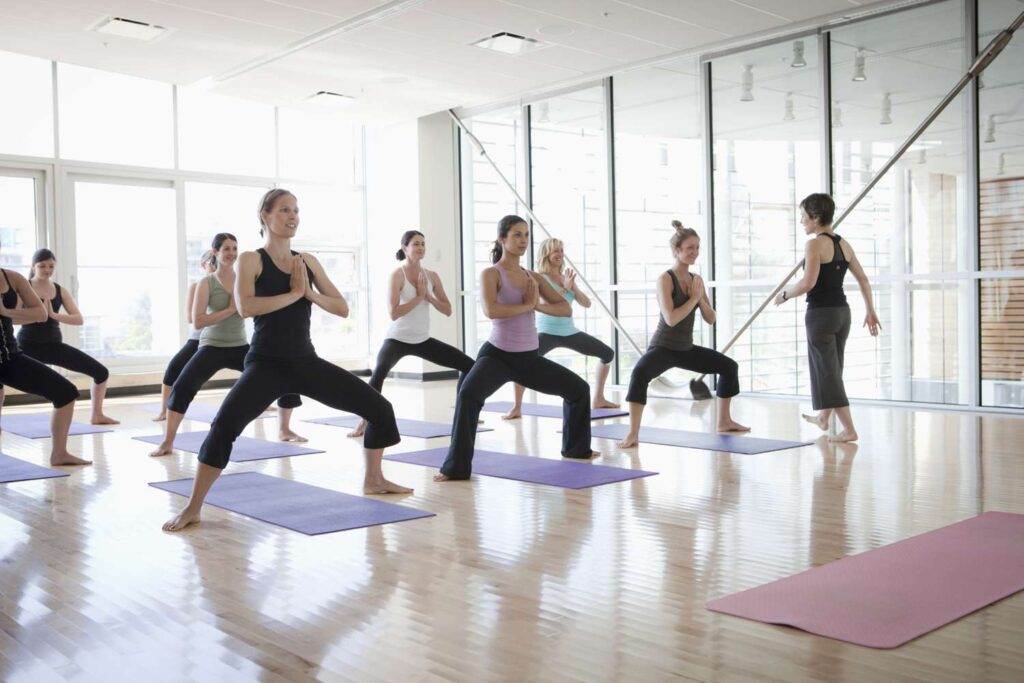 Source: verywellfit
Source: verywellfit
In power yoga, traditional asanas are often modified to make them more challenging. For example, the basic plank pose may be transformed into side-plank variations or incorporated into a series of push-ups. Similarly, the warrior II pose may involve adding hand weights or performing lunges between postures for an added challenge. The fast-paced nature of power yoga means that practitioners can expect to work up a sweat while building strength and endurance. The practice also incorporates breathwork techniques similar to those found in other styles of yoga, helping participants stay focused and centered during their workout.
While some people may find power yoga intimidating at first glance, it can be adapted for all levels of fitness and ability. Modifications can be made based on individual needs and limitations, making it accessible for beginners and experienced yogis alike.
Power yoga offers a unique take on traditional asanas by incorporating strength-building exercises into the practice. Whether you’re looking to build muscle or simply switch up your routine from more gentle forms of yoga like Hatha or Vinyasa flow classes – there’s something for everyone in this dynamic form of exercise!
Yin Yoga: Gentle Modifications and Longer Holds for Deep Release
Yin Yoga is a gentle and meditative practice that focuses on longer holds to target the connective tissues of the body. This style of yoga involves passive stretching, where poses are held for several minutes with relaxed muscles. Unlike other styles of yoga that focus on muscular engagement and movement, Yin Yoga emphasizes stillness and relaxation. The slow pace allows practitioners to go deeper into their bodies and minds, helping them release tension, stress, and emotions.
 Source: ekhartyoga
Source: ekhartyoga
In Yin Yoga, modifications are used to make the asanas accessible for all body types and levels. Props such as blankets, bolsters, blocks or straps can be added to support the body in poses like forward folds or twists. The longer holds in Yin also allow for a more profound stretch while reducing the risk of injury compared to dynamic styles of yoga. This makes it an excellent option for people dealing with chronic pain or recovering from injuries.
By holding postures for extended periods, practitioners have time to tune inwardly by observing their thoughts and sensations without judgment. This mindful approach cultivates patience, acceptance toward discomforts both physically and mentally.
This yin-style provides ample opportunity not only deepening your physical flexibility but also creating space within yourself through mindfulness practices – making it perfect practice during stressful times!
Modern Interpretations of Traditional Asanas
The practice of yoga has evolved tremendously over time, with modern interpretations of traditional asanas becoming increasingly popular. These innovative and unconventional variations have pushed the boundaries of what was once thought possible in yoga.
One example is the use of props to deepen and enhance the experience of asanas. For instance, a block can be used to bring the ground closer in standing forward fold, making it accessible for those with tight hamstrings. Additionally, straps can be used to help practitioners achieve deeper stretches or binds that might not otherwise be possible. Another modern interpretation involves incorporating elements from other movement practices such as dance or martial arts into traditional asanas. This fusion creates a unique and dynamic flow that challenges both mind and body.
Additionally, some teachers have taken inspiration from animals to create new poses based on their movements and behaviors. For example, “cobra pose” has been adapted into “dragonfly pose,” which mimics the buzzing motion of dragonflies in flight.
These modern interpretations demonstrate how yoga continues to evolve while remaining rooted in its ancient traditions. Through experimentation and creativity, practitioners are able to find new levels of self-discovery and growth within their practice.
Exploring Innovative and Unconventional Asana Variations
Innovative and unconventional asana variations are becoming increasingly popular in the modern yoga landscape. Yoga practitioners are exploring new ways to challenge themselves physically and mentally, while also expressing their creativity through movement.
One example of an innovative variation is the “upside-down” version of Adho Mukha Svanasana (Downward-Facing Dog). This variation involves pressing up into a handstand from the traditional pose. It requires strength, balance, and courage, but can be incredibly rewarding for those who attempt it. Another unconventional asana variation is the “twisted warrior” sequence. This modification involves twisting the torso while in Warrior II pose, adding a deeper stretch for both the hips and spine. The twist also engages core muscles and challenges balance.
Other innovations include hybrid poses that combine elements from multiple traditional asanas or incorporate props such as blocks or straps to deepen or modify existing postures.
While these unconventional variations may not have been part of classical yoga practice, they offer exciting opportunities for exploration and growth within one’s personal practice. As yoga continues to evolve with modern times, we can expect more creative adaptations like these to emerge in the future.
Exploring Innovative and Unconventional Asana Variations
As the practice of yoga continues to evolve, teachers and practitioners alike are exploring new ways to express traditional asanas. These innovative and unconventional variations can help students deepen their understanding of the postures while also adding a sense of creativity and playfulness to the practice.
One example is “inverted warrior,” which involves starting in warrior II pose before flipping the front leg up into a handstand position. This variation requires strength, balance, and focus, making it a challenging yet rewarding posture for advanced practitioners. Another unconventional variation is “flying pigeon,” where one begins in pigeon pose before lifting off into an arm balance with extended legs. This posture not only challenges physical strength but also demands mental concentration and courage.
Innovative asana variations can take many forms – from creative transitions between poses to unexpected modifications that target specific muscle groups or areas of focus. By experimenting with these adaptations, yogis can discover new depths within themselves both physically and mentally.
It’s important to note that while unconventional asana variations may be exciting and fun, they should always be approached with caution. Practitioners should have a solid foundation in traditional postures before attempting more advanced variations under the guidance of an experienced teacher.
Exploring innovative and unconventional asanas allows us to expand our perspectives on what’s possible within our yoga practices while honoring the wisdom and tradition behind classical postures.
Conclusion
The practice of yoga is constantly evolving and adapting to meet the needs and interests of modern practitioners. While traditional asanas continue to hold cultural and philosophical significance, there is also great value in exploring variations and adaptations that can enhance our physical abilities, target specific muscle groups or areas of focus, or provide therapeutic benefits. Through creative modifications and contemporary interpretations, we can expand our understanding of traditional asanas while still honoring their roots.
Whether you prefer a challenging power yoga class or a gentle yin practice, there are countless ways to reimagine traditional poses in your own unique way. By experimenting with different variations and adaptations, you may discover new insights about yourself both on and off the mat. Remember that yoga is ultimately about cultivating mindfulness, self-awareness, and compassion – so don’t be afraid to get creative!
Search
Wellness Topics
This Just In
- Reimagining Traditional Asanas: Modern Variations and Adaptations December 21, 2023
- Iconic Asanas from Classical Yoga Texts: Patanjali and Beyond December 21, 2023
- Exploring the Benefits of Asanas: The Path to Holistic Well-Being December 21, 2023
- The Future of Asanas: Exploring Emerging Practices and Innovations December 21, 2023
- Discovering Yoga’s Roots: Asanas in Vedas and Upanishads December 21, 2023

